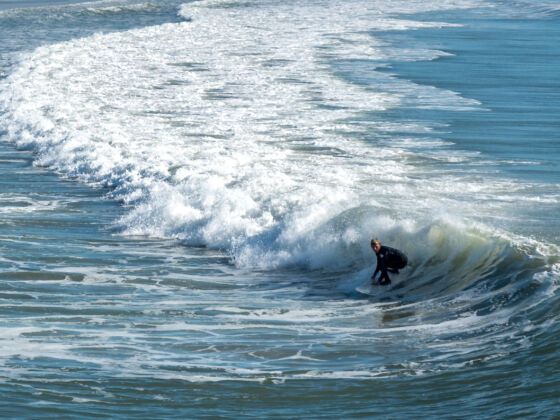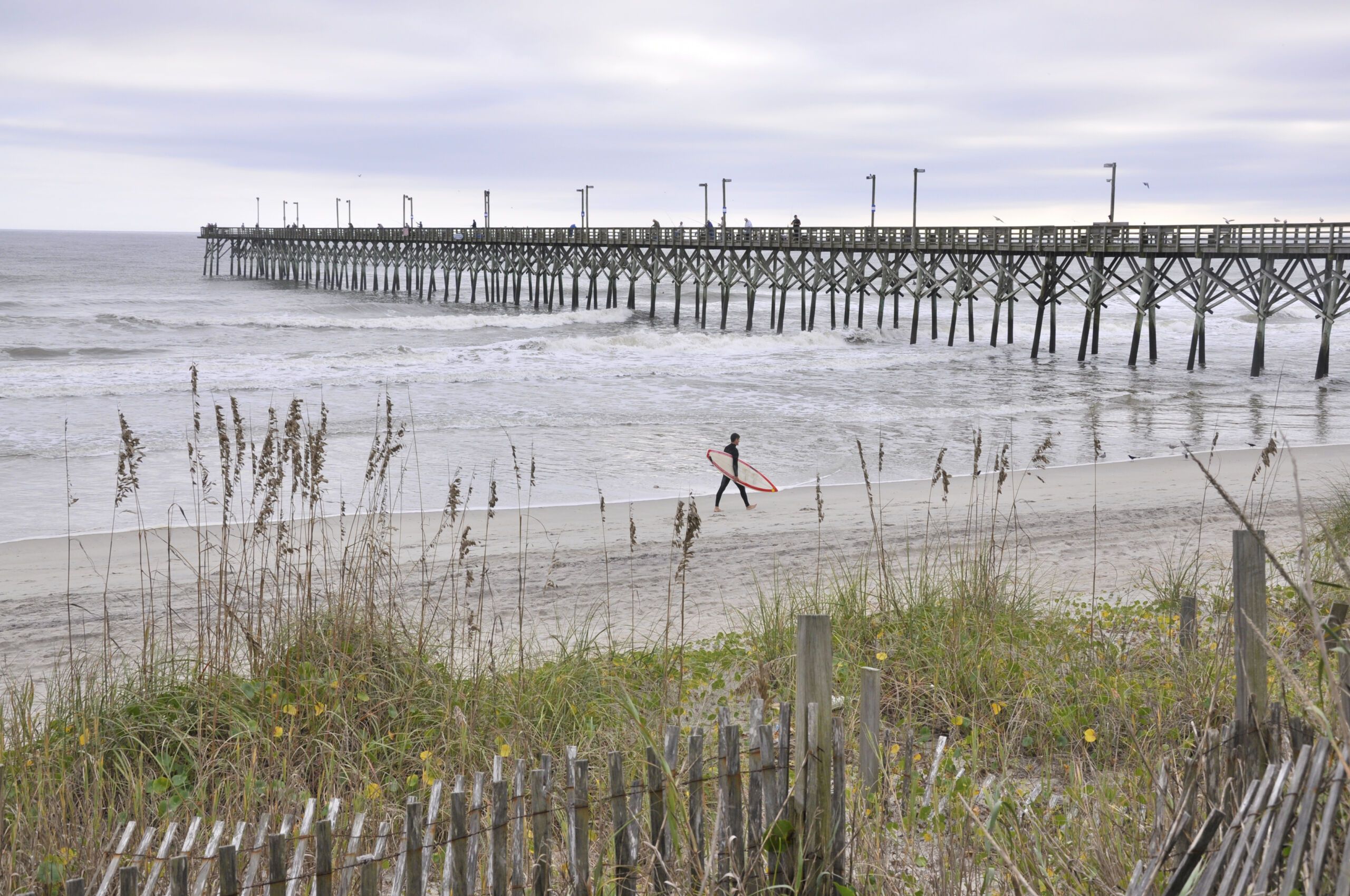Surfing is a rite of passage in coastal cultures. Learn how to do it, and you’re forever part of the legend of the endless summer, one of those eternally cool types who spend their days hanging 10 and evenings chatting about the waves of the day at a beach party, Pacifico in hand. The lifestyle can seem intimidating from the outside, especially in places like Malibu or Santa Cruz, both top California surf spots where locals want to keep the waves to themselves.
If you want to skip that “locals only” mentality, head to North Carolina to learn how to surf. Here, surf breaks start small and progress consistently, swells hit year-round, and the culture of Southern hospitality ensures that instructors and fellow surfers are quick to offer a tip or point you towards the right break. Here’s where to learn to surf in North Carolina.



